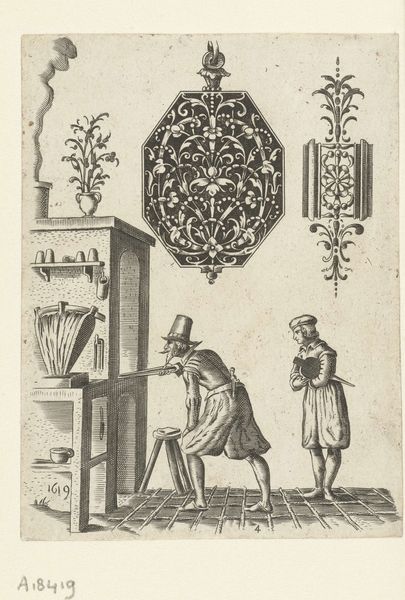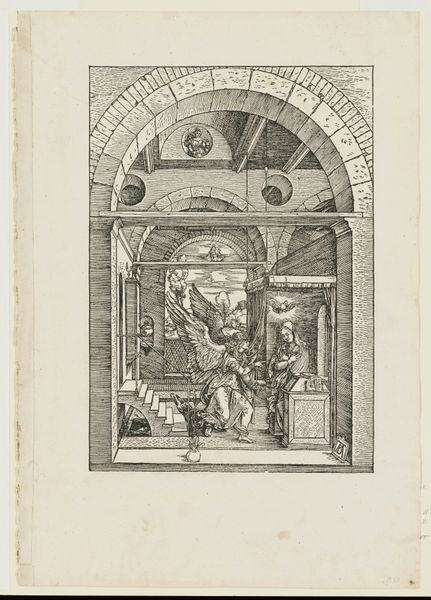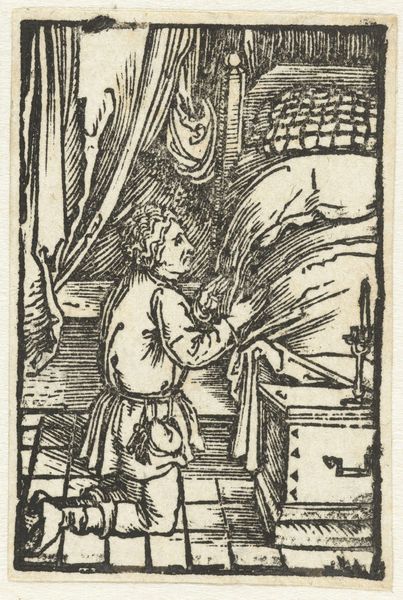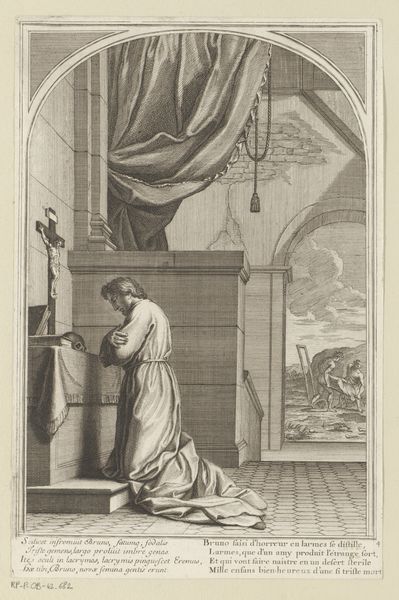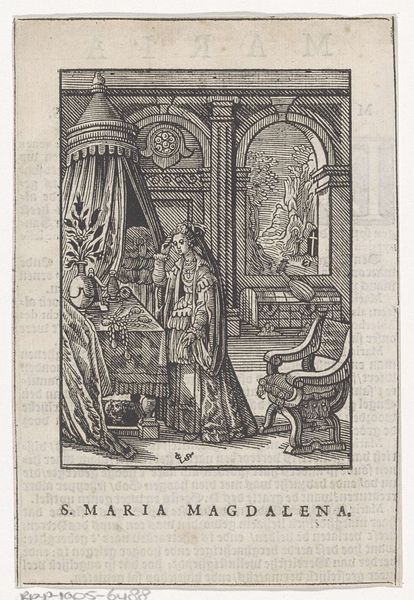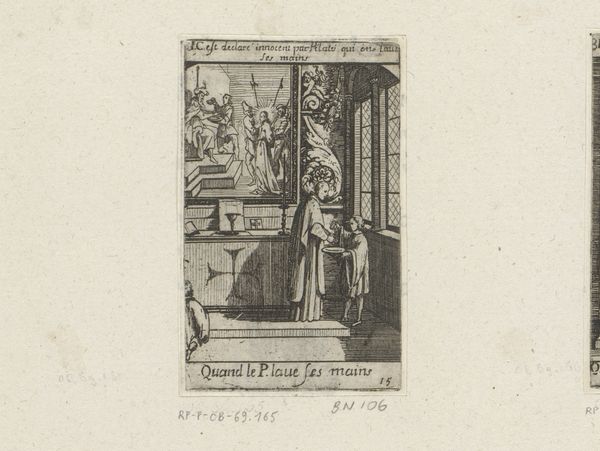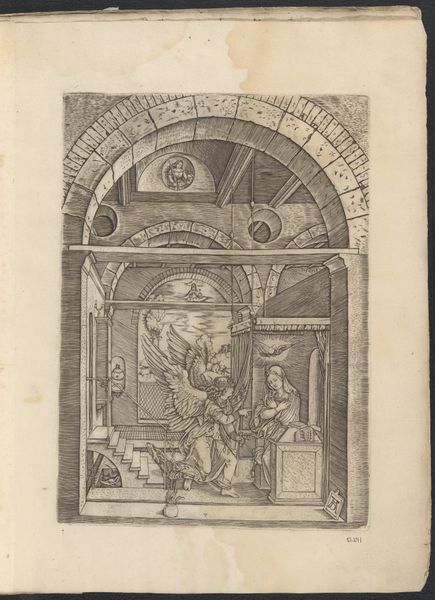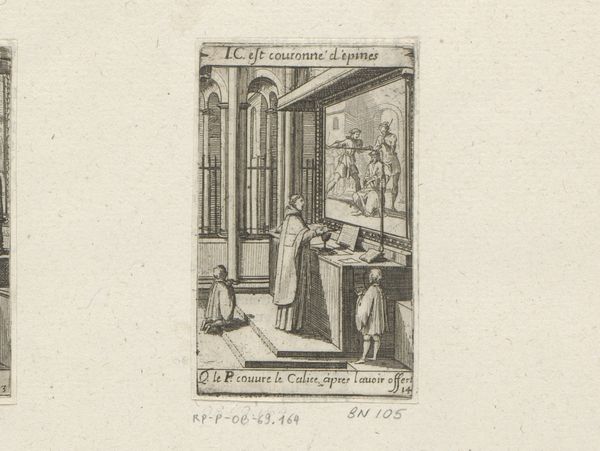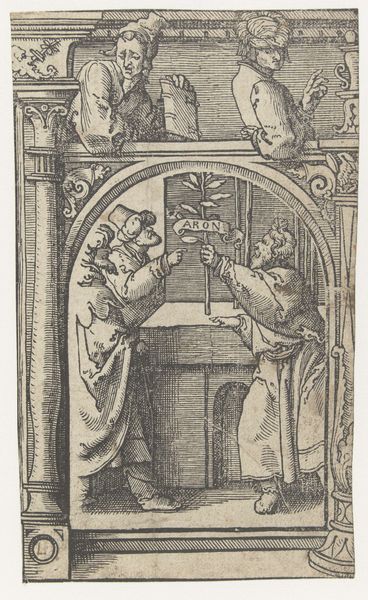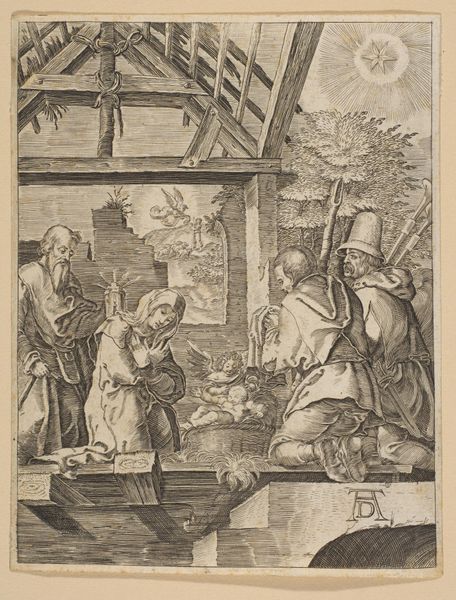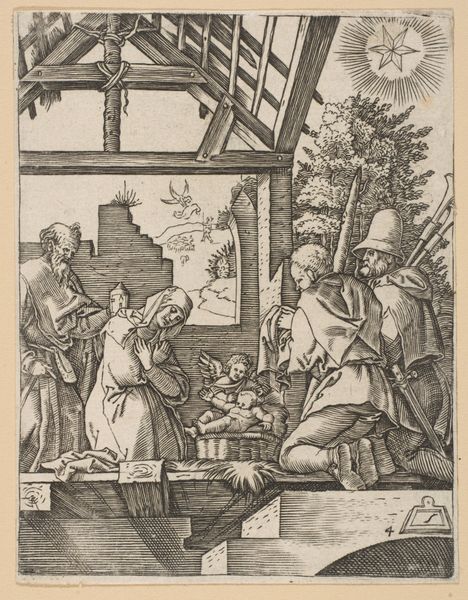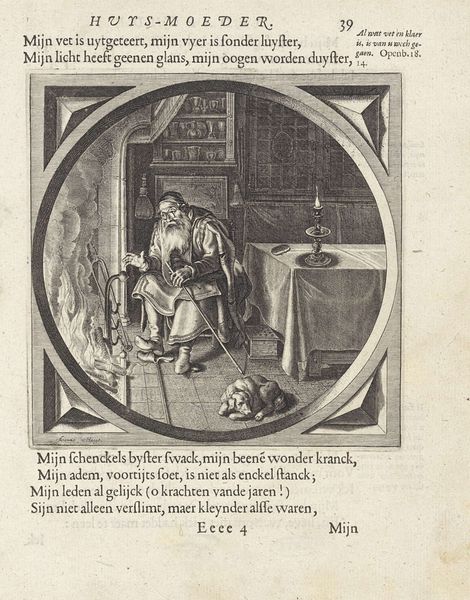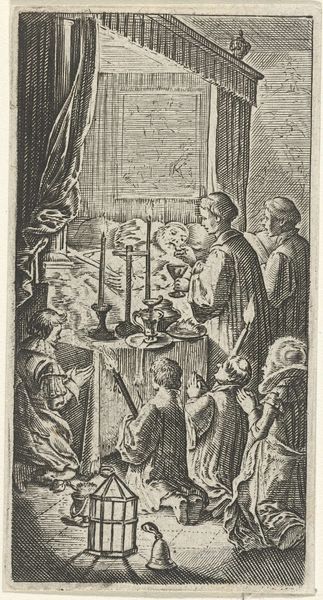
print, engraving
#
baroque
# print
#
pen sketch
#
old engraving style
#
figuration
#
line
#
genre-painting
#
engraving
Dimensions: height 107 mm, width 80 mm
Copyright: Rijks Museum: Open Domain
Editor: This engraving, “Edelsmidboeket in achthoekige horlogekast,” made after 1619 by Jacob von der Heijden, shows a goldsmith at work and floral ornaments. The incredible detail with just lines and the composition make me wonder how it was produced. What do you see in this print? Curator: Well, first off, it’s key to remember this isn't just decoration. Consider the materials: copperplate engraving. Each line painstakingly etched. This was labor! The division of labor between the designer, like von der Heijden, and the engraver is significant, too. Look closely – it’s likely a reproductive print. Someone probably made something out of metal. Then von der Heijden translated it into a readily manufacturable format. Editor: So you’re saying the print is documentation of another material object? I never would have considered the means of reproduction being relevant to the value! Curator: Exactly! How was the knowledge of how to produce fine objects transferred? This engraving is a record of that process. Think about the dissemination of ideas about craftsmanship through these prints and what the material context suggests. What implications does this bring for artistic labor and craftsmanship? Editor: It is wild to realize that a single image can illuminate so many elements about how materials were valued. I see a clear emphasis here on craft, the dissemination of artistic knowledge, and the value placed on detailed handwork in Early Modern Europe. I will be keeping an eye out for the power of prints now! Curator: Indeed, the study of material reveals fascinating things. The relationship between print and object in turn reveals social hierarchies.
Comments
No comments
Be the first to comment and join the conversation on the ultimate creative platform.
